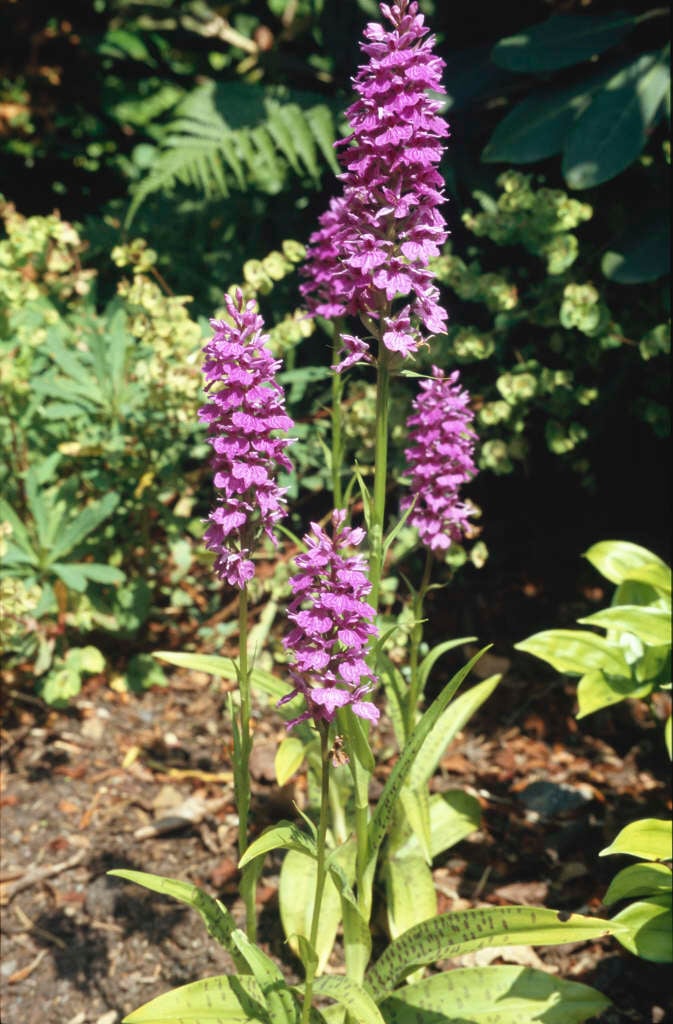Dactylorhiza foliosa
leafy orchid
An erect herbaceous perennial to 70cm tall, with spirally arranged, lance-shaped leaves and bright rosy-purple flowers 2.5cm wide, in a dense spike to 12cm long
Other common names
Madeira orchid
Buy this plant
Size
Ultimate height
0.5–1 metresTime to ultimate height
2–5 yearsUltimate spread
0.1–0.5 metresGrowing conditions
Moisture
Moist but well–drainedpH
Acid, Alkaline, NeutralColour & scent
| Stem | Flower | Foliage | Fruit | |
| Spring | Purple | Green | ||
|---|---|---|---|---|
| Summer | Purple | Green | ||
| Autumn | ||||
| Winter |
Position
- Partial shade
Aspect
West–facing or East–facing or North–facing
Exposure
Exposed or Sheltered Hardiness
H4Botanical details
- Family
- Orchidaceae
- Native to GB / Ireland
- No
- Foliage
- Deciduous
- Habit
- Bushy
- Genus
Dactylorhiza are deciduous tuberous perennials with lance-shaped leaves sometimes spotted with purple, and dense terminal racemes of purple, pink or white flowers
- Name status
Correct
- Plant range
- Madeira
How to grow
Cultivation
Grow in moist but well-drained, humus-rich, leafy soil in partial shade. Ideal for a rock or woodland garden, or in a wildflower meadow
Propagation
Divide in early spring
Suggested planting locations and garden types
- Cottage and informal garden
- Rock garden
- Wildflower meadow
- Flower borders and beds
Pruning
No pruning required. Deadhead flowers as they fade if required
Pests
Generally pest-free
Diseases
Generally disease-free
Get involved
The Royal Horticultural Society is the UK’s leading gardening charity. We aim to enrich everyone’s life through plants, and make the UK a greener and more beautiful place.